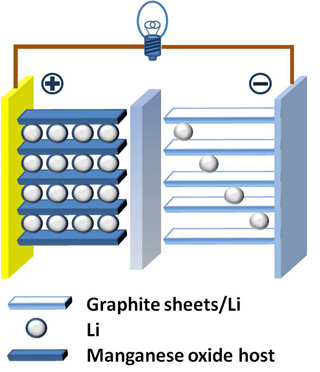Course Description
This course introduces principles and mathematical models of electrochemical energy conversion and storage. Students study equivalent circuits, thermodynamics, reaction kinetics, transport phenomena, electrostatics, porous media, and phase transformations. In addition, this course includes applications to batteries, …
This course introduces principles and mathematical models of electrochemical energy conversion and storage. Students study equivalent circuits, thermodynamics, reaction kinetics, transport phenomena, electrostatics, porous media, and phase transformations. In addition, this course includes applications to batteries, fuel cells, supercapacitors, and electrokinetics.
Course Info
Learning Resource Types
assignment
Problem Sets
grading
Exams with Solutions
notes
Lecture Notes
Instructor Insights

An example of a Lithium-ion battery. Learn more about electrochemical energy storage in Lecture 3. (Image by Chem511grpThinLiBat on Wikimedia Commons.)










